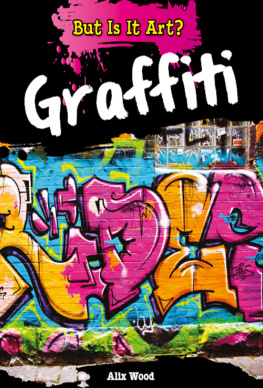Please visit our website, www.garethstevens.com. For a free color catalog of all our high-quality books, call toll free 1-800-542-2595 or fax 1-877-542-2596
Cataloging-in-Publication Data
Names: Wood, Alix.
Title: The unmarked grave: be a forensic anthropologist / Alix Wood.
Description: New York : Gareth Stevens Publishing, 2018. | Series: Crime solvers | Includes index.
Identifiers: ISBN 9781538206409 (pbk.) | ISBN 9781538206348 (library bound) | ISBN 9781538206225 (6 pack)
Subjects: LCSH: Forensic anthropology--Juvenile literature. | Victims of crimes--Identification--Juvenile literature. | Criminal investigation--Juvenile literature. | Forensic sciences--Juvenile literature. Classification: LCC GN69.8 W66 2018 | DDC 614.17--dc23
First Edition
Published in 2018 by
Gareth Stevens Publishing
111 East 14th Street, Suite 349
New York, NY 10003
Copyright 2018 Alix Wood Books
Produced for Gareth Stevens by Alix Wood Books
Designed by Alix Wood
Editor: Eloise Macgregor
Consultant: Stacey Deville, MFS, Texas Forensic Investigative Consultants
Photo credits: Cover, right freestockphotos, all other images are in the public domain
All rights reserved. No part of this book may be reproduced in any form without permission from the publisher, except by reviewer.
Printed in the United States of America
CPSIA compliance information: Batch #CS17GS For further information contact Gareth Stevens, New York, New York at 1-800-542-2595.
Contents
Call the Forensic Anthropologist
Meet a Forensic Anthropologist
Specialist Skills
SCIENCE DETECTIVE Know Your Bones
Working as a Team
SCIENCE DETECTIVE Finding Buried Evidence
A Skulls Secrets
Telltale Teeth
Any More Bones?
SCIENCE DETECTIVE Scattered Skeleton
Who Was the Victim?
SCIENCE DETECTIVE Can Bones Tell You Height?
Search for a Cause of Death
SCIENCE DETECTIVE You Are What You Eat!
Meeting Face to Face
SCIENCE DETECTIVE Can You Identify the Victim?
A Vital Clue
SCIENCE DETECTIVE Recording Evidence
Preparing Evidence
The Verdict
Glossary and Answers
Want to Be a Forensic Anthropologist?
Further Information
Index
Call the Forensic Anthropologist
On a sunny March afternoon, two construction workers are laying cable along the side of the highway. One worker, Steve, calls his co-worker over. He has found an obstruction, and doesnt like the look of it. They brush away some more earth, and find what looks like a human skull...
DISPATCHER: Emergency 911. What is the location of your emergency?
STEVE: Im Steve Harrison. Im working on the highway improvements at Saunderstone.
DISPATCHER: What is your emergency, caller?
STEVE: We think we may just have found a human skeleton.
DISPATCHER: What makes you think you have found a skeleton?
STEVE: I can see a skull staring up at me...
Case File
Date: March 19, 2017 | Unit Number: 574 |
Reporting Officers Notes
2:05 pm: Dispatch received a 911 call about a skeleton found near the Saunderstone highway. The caller identified himself as Steve Harrison.
Unit 574 was dispatched and arrived at the scene at 2:37 pm. The officers found what appeared to be a human skull. They roped off the scene and asked for backup and medical assistance.
3:05 pm: Detectives Karen Smithson and Kuan Wu arrived at the scene. The Crime Scene Investigator team was called and arrived at 3:22 pm. They examined the skull. It certainly appeared to be human. It had also clearly been in the ground a long time. They realized that they needed to call in a specialist.
3:55 pm: The forensic anthropologist, David Marek, is called. He is on his way.
Solve It!
Why might investigators rush to a crime scene if the victim had been dead a long time?
a) | the victim may have been buried more recently, so there still may be important evidence nearby |
b) | theres no reason to rush |
Answers on page 45
The detectives make sure the construction team stops working near the area. They need to protect any evidence. They declare the area a crime scene. No one may enter or leave without permission. The medical examiner arrives to examine the skull, and sees that the person has been dead a long time. This case needs a forensic anthropologist.
Meet a Forensic Anthropologist
A text message comes through on David Mareks cell phone. He is busy teaching a forensic anthropology class at the university where he works. He looks down at the message. A body has been found at a construction site across the city. He texts back that hell be there as soon as he can. Its almost the end of class.
As the last student leaves, he grabs his keys and heads to his car. His equipment is always ready in the trunk, just in case.
Solve It!
Why do you think David is wearing glasses in this picture?
a) | to keep dust from flicking into his eyes |
b) | because he cant see very well |
c) | it is a sunny day |
Answers on page 45
Personnel File
Name:David Marek
Job: Forensic Anthropologist
Education: Studied for a degree in biology, then studied to be a Master of Forensic Anthropology and a Doctor of Physical Anthropology
Other jobs: Teaches forensic anthropology at a university
Career:
David has worked as a consultant for the police department for six years.
Favorite school subjects: Biology and history.
Favorite part of his job: You never know what the day will bring.
Worst part of his job: Some of the sights and smells can upset your stomach!
Most interesting case: David helped identify a victim buried way back in around 1680! The odd way the body had been buried led David to believe he had been murdered and dumped. The injuries to his bones showed he had a hard life and a violent death. David discovered a servant had gone missing in the area in around 1670. It is likely the body was his!
Specialist skills
F orensic anthropology is a specialist job. That means that not many people have the skills that David has learned. It takes years of training to become a forensic anthropologist. Forensic means to do with the law. Anthropology is the study of humans. A forensic anthropologist is a scientist who helps the police to identify human remains, often just from their bones.


















